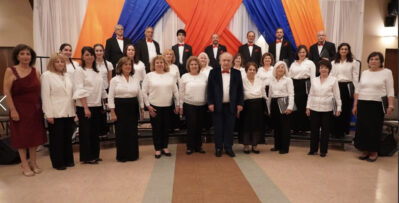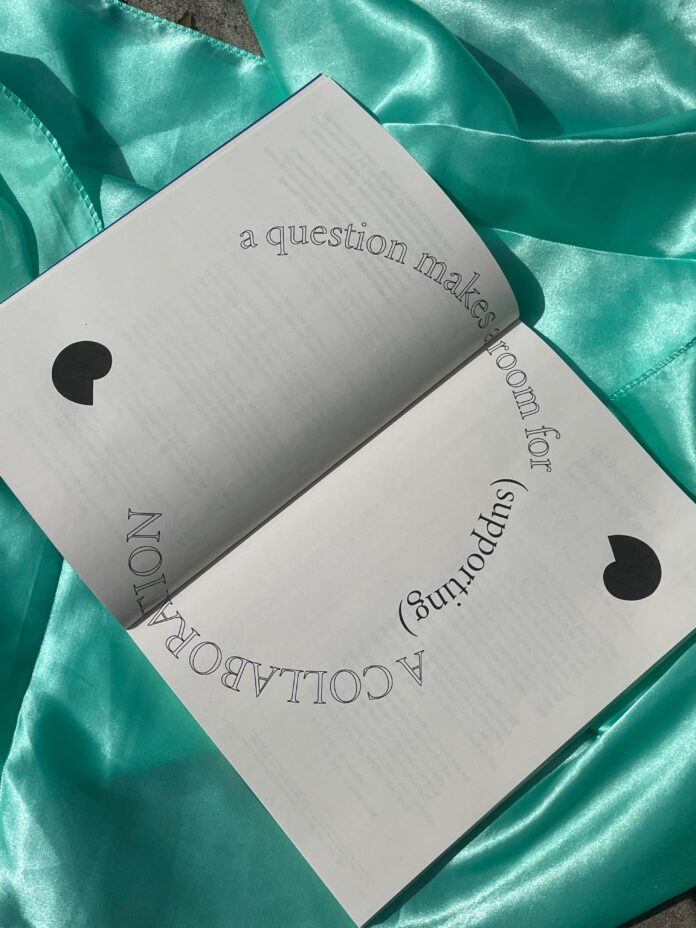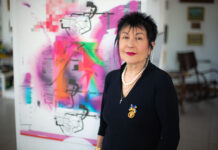Armenian Creatives 02: A Question Makes a Room for a Collaboration is an invitation to calm and to harmony. A seemingly incongruous mixture of materials — conversations, workshops and gatherings that the Creatives hope will ultimately help readers “build rooms of their own”— evidences the young artists’ peaceful and joyful existence, an existence many of us covet.
“A lace workshop practice brought peace to our conversation,” they write. Indeed, true to their mission, these men and women, initially centered in Brooklyn, New York, now spread to the far corners of the world, meet once a month to share what they have accomplished and what they dream of accomplishing. Theirs is an unwavering will to “further explore” and to “reinscribe our presence continually.”
The Anthology, the second in a projected series of publications foregrounding the activities of the group, is the outcome of gatherings the Collective decided to host in an effort to keep connected during the Covid 19 pandemic and lockdown. Questions were emailed to the members inviting them to participate in collaborative projects of mutual interest. Rehan and Deborah follow the visual details of photographs to “reconstruct cultural heritage.” Kamee and Knar “explore the spiritual and temporal qualities of physical belongings, and the sense of belonging they might evoke for both participants and audiences with their shared and respective ancestral lands, histories, and memory.” Reproduced in the book are photos of family heirlooms — pressed flowers from a lost garden, a bone comb, fabric fragment from an Ethiopian priest’s velvet umbrella etc. — that evoke our ancestral land and diaspora history. With a fascinating story behind each belonging, these objects highlight the artists’ awareness of the disruption caused by forced displacement.

Kamee tells of her great-grandmother’s (born in Adana) amniotic sac — dried with salt, folded up, sewn into cloth, and used as a good luck charm—that was borrowed and never returned “because war broke out.” Kamee and Knar’s project did, in fact, lead to their participation in Sunrise Stepanakert, a festival that gathered artists from Artsakh, Armenia and Diaspora in Stepanakert, in July 2022. The project has given birth to the Museum of Forgotten Belongings.
A rich collection of materials — flyers inviting the participants to the events, notes to be read “in anticipation of the event,” documents to be read “in memory of the event,” images with captions and descriptions, screenshots from workshops, links to websites and digital resources, and much more — help the reader imagine the gatherings and share in the process of creating intimate archives of “personal materials with easy access,” as an alternative to “gated archives.” Asking questions — the spiral of the Armenian question mark is the inspiration behind the design of the book cover—is a key ingredient of the process of building the archive. The goal is not to come up with absolute answers, but “to ease absences in each other, absences the artists see as “inherently part of our emotional and physical archives as Armenians.” The historical tragedy, the loss of 1915, is very much present in their consciousness, yet their gaze is fixed ahead on imagining possible futures, and on celebrating life.









